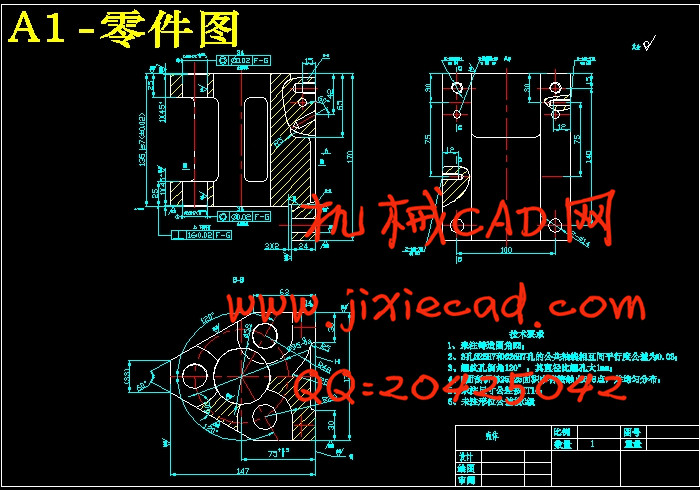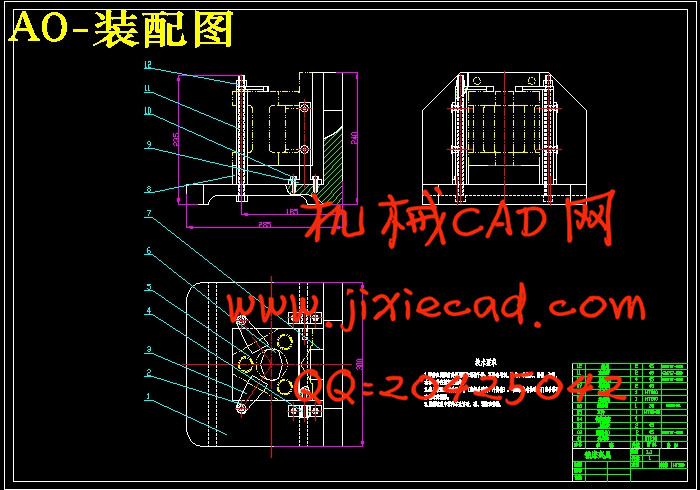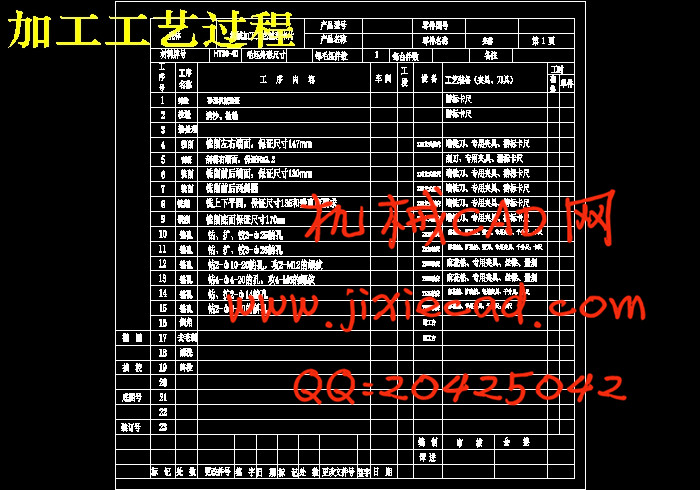设计简介
摘要
夹具是零件加工的夹紧装置,是加工零件的一种必不可少的装置。随着零件的尺寸变化,越来越多的夹具被淘汰了,因此,设计一套专用夹具是十分有必要的。在设计专用家具时要考虑工件的定位方案,工件的夹紧方案和设计夹紧机构,夹具的其他组成部分,夹具的结构形式等。俩侧面深20 2-M6-7H螺纹底孔钻夹具设计是包括零件加工的工艺设计、工序设计以及专用夹具的设计三部分。在工艺设计中要首先对零件进行分析,了解零件的工艺再设计出毛坯的结构,并选择好零件的加工基准,设计出零件的工艺路线;接着对零件各个工步的工序进行尺寸计算,关键是决定出各个工序的工艺装备及切削用量;然后进行专用夹具的设计,选择设计出夹具的各个组成部件,如定位元件、夹紧元件、引导元件、夹具体与机床的连接部件以及其它部件;计算出夹具定位时产生的定位误差,分析夹具结构的合理性与不足之处,并在以后设计中注意改进。
关键词:专用夹具、工艺路线、工艺分析、基准
ABSTRACT
Clamping device clamps are machined parts , is an essential part of the processing unit . As part of the changes in the size , more and more fixtures are eliminated, therefore, the design of a special fixture is very necessary . In furniture design special programs to consider when positioning the workpiece clamping scheme and design workpiece clamping mechanism , other components of the fixture , fixtures and other structural forms .Both sides of the deep 20 2-M6-7H starting hole is drilled , including parts machining fixture design process design , process design, and special fixtures designed in three parts. In the process design of the parts to be analyzed first , to understand parts of the process re-design the structure of the blank , and select the machining datum good parts , design process route parts ; then step on the part of each step of the dimensional calculations, the key the process is to determine the amount of various equipment and cutting processes ; then dedicated fixture design, selection of the various component parts of the fixture design , such as the positioning element , clamping elements , guiding elements , specific folder connection with the machine parts and other components ; positioning errors generated when the calculated fixture analyze the rationality and the inadequacies of the fixture structure and attention to improving the design in the future .
Keywords: Special fixtures, routing, process analysis, benchmarking
目 录
摘要 I
ABSTRACT I
第1章 绪论 3
1.1 机床夹具的发展概括 3
1.2 机床夹具的发展方向 3
1.3 夹具的组成 5
1.4 夹具设计的基本要求 5
1.5 机床夹具在机械加工中的作用 6
第2章 壳体机械加工工艺规程设计 8
2.1 零件的工艺分析及生产类型的确定 8
2.1.1 零件的作用 8
2.1.2 零件的工艺分析 8
2.1.3 零件生产类型的确定 9
2.2 零件工艺规程设计 9
2.2.1 零件制造形式的确定 9
2.2.2 基准的选择 9
2.3 制定加工工艺路线 10
2.4 机械加工余量,工序尺寸及毛坯尺寸的确定 11
2.5 确定切削用量及基本工时 12
第3章 专用夹具的设计 17
3.1 问题的提出 17
3.2 夹具设计 17
3.2.1 确定定位方案,选择定位元件 17
3.2.2 定位基准选择 18
3.2.3 切削力及夹紧力计算 18
3.2.4 确定夹紧机构 18
3.2.5 定位误差分析 19
3.2.6 夹具操作的简要说明 19
第4章 结论 20
参考文献 21









